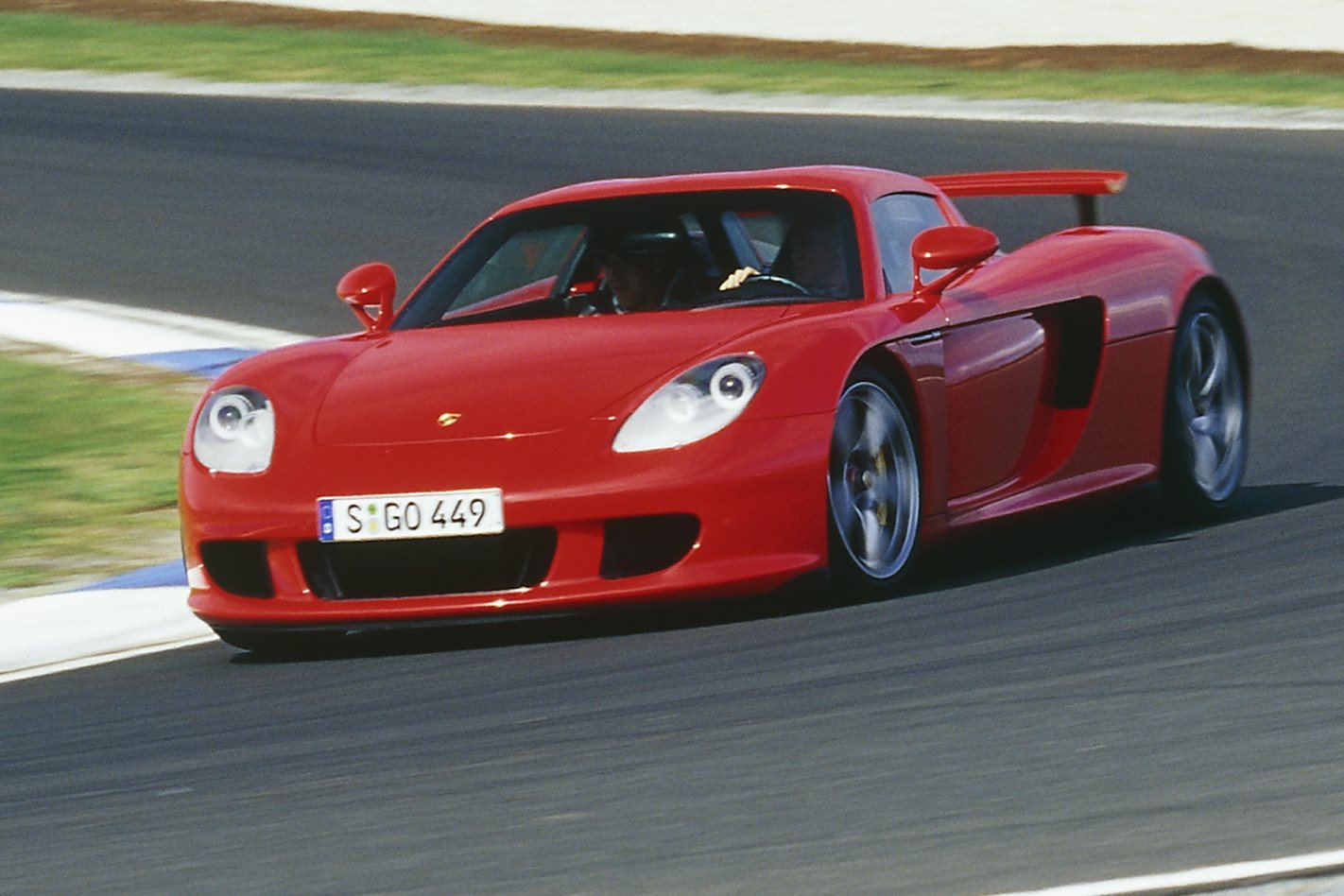Porsche’s Carrera GT is the finest, fastest road car in the world. Need convincing? Then look at these nerdy numbers: at Phillip Island’s GP circuit, a V8 Supercar reaches 285km/h – with 463kW, 1355kg and sticky slicks.
This article first published in MOTOR November 2004.
This Carrera GT has less power, more weight and runs treaded road tyres. And it just hit 280km/h with a passenger! The super-fast Porsche 911 GT3 RS that blitzed the road racers over the previous pages cracks ‘just’ 242km/h. Welcome to the supercar club.

Job description number one was meeting the press for a few intimate hot laps of Phillip Island GP Circuit. What else would you do with a rare, super-priced supercar? Not much else, it seems, given that the GT only comes in left-hand drive; it’s a no-go for our public roads. The two sold to Aussies will remain on Euro soil.
As it idles in PI’s pit lane, compared to the 911, the Carrera GT looks flat and wide, like a stepped-on 911. The large but light carbon-fibre door swings open with the resistance of a fly-screen to reveal what is a relatively small aperture, not much larger or easier to ingress than an Exige.
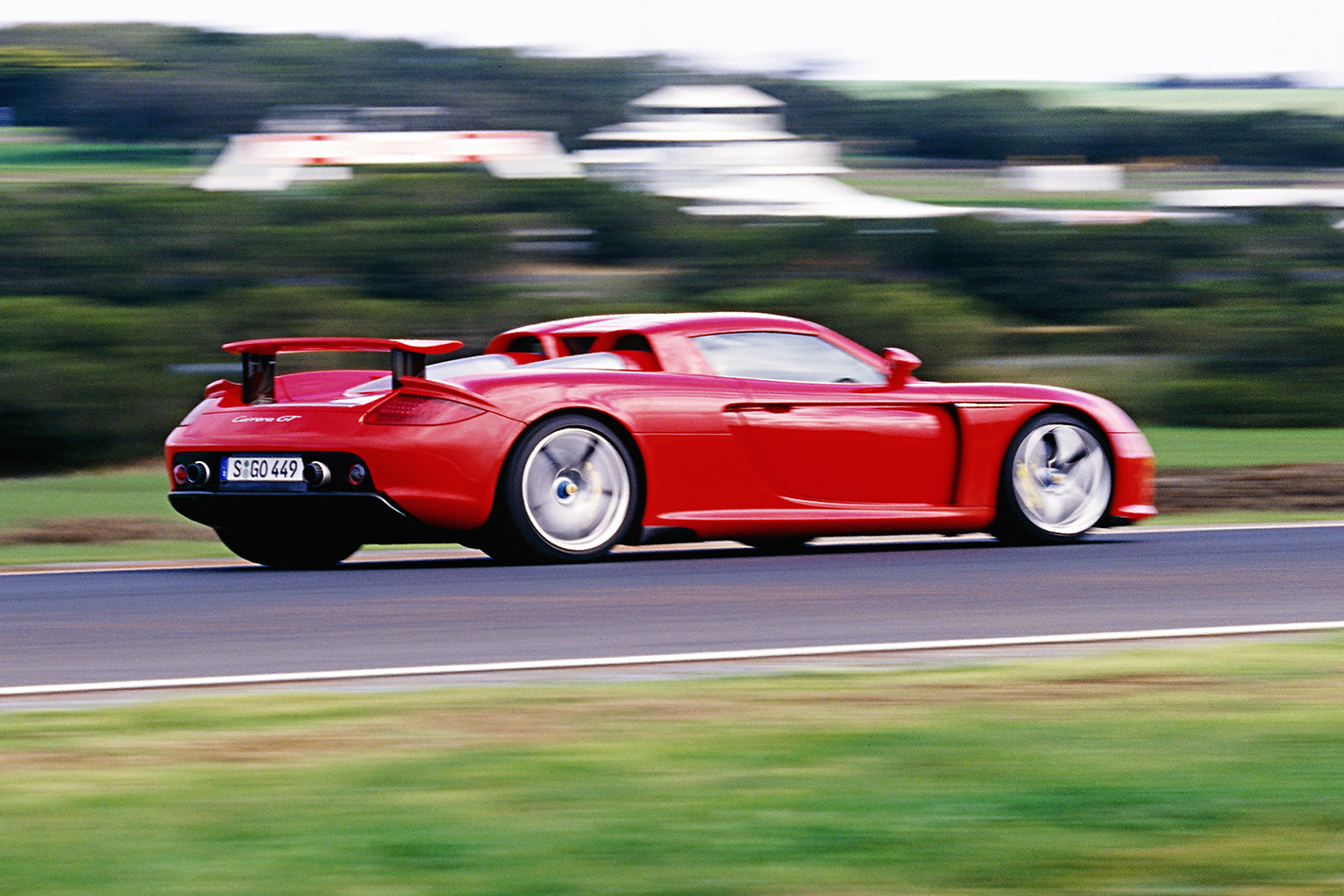
The steering wheel, like the seats, is manually adjustable only for reach, but perfectly sized and placed, with the oddly wooden shifter just a wrist twist away.
With death threats and multiple resignations ready if one of us binned Porsche’s baby, an unfamiliar left-hand twist of the key, stirs the V10 for half a second before it whines into life. From its 950rpm idle, the brush of the accelerator unleashes a rush of violence and a r-r-r-r-mmmm! That’s 7000rpm!
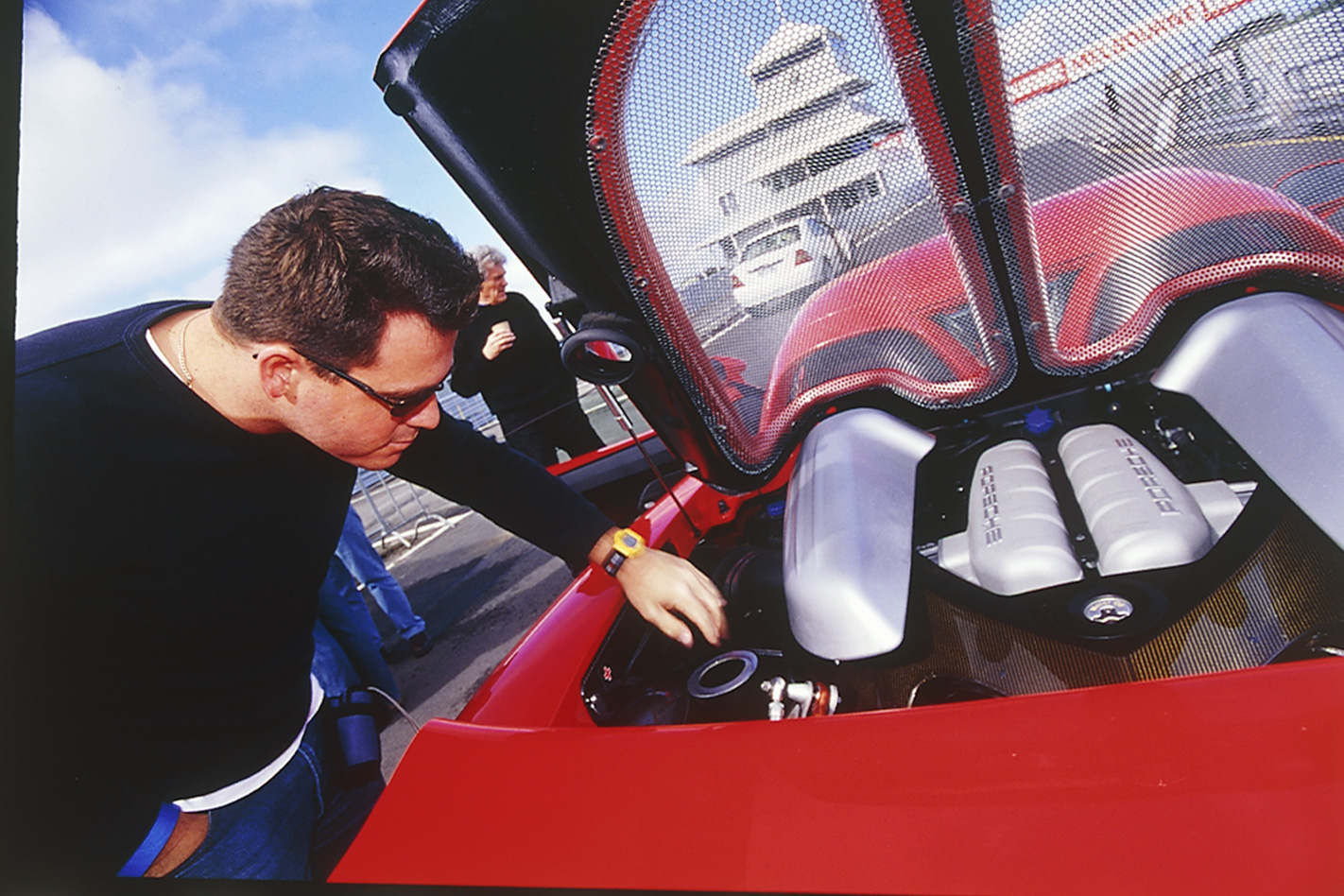
Then the passenger door opens and in jumps Porsche Carrera Cup pilot Alex Davison to ride shotgun and chaperone. Which is kinda like having Carmen Electra over at your place with a bottle of scotch, and Dennis Rodman is sitting in the corner with arms crossed. Damn.
Still, for a million bucks we’d probably be a little over-cautious too, this being just one of 1500 Carrera GTs planned for production over the next three years. Davison suggests, a tad condescendingly, that I shouldn’t bother trying to heel-and-toe, it’s too hard.
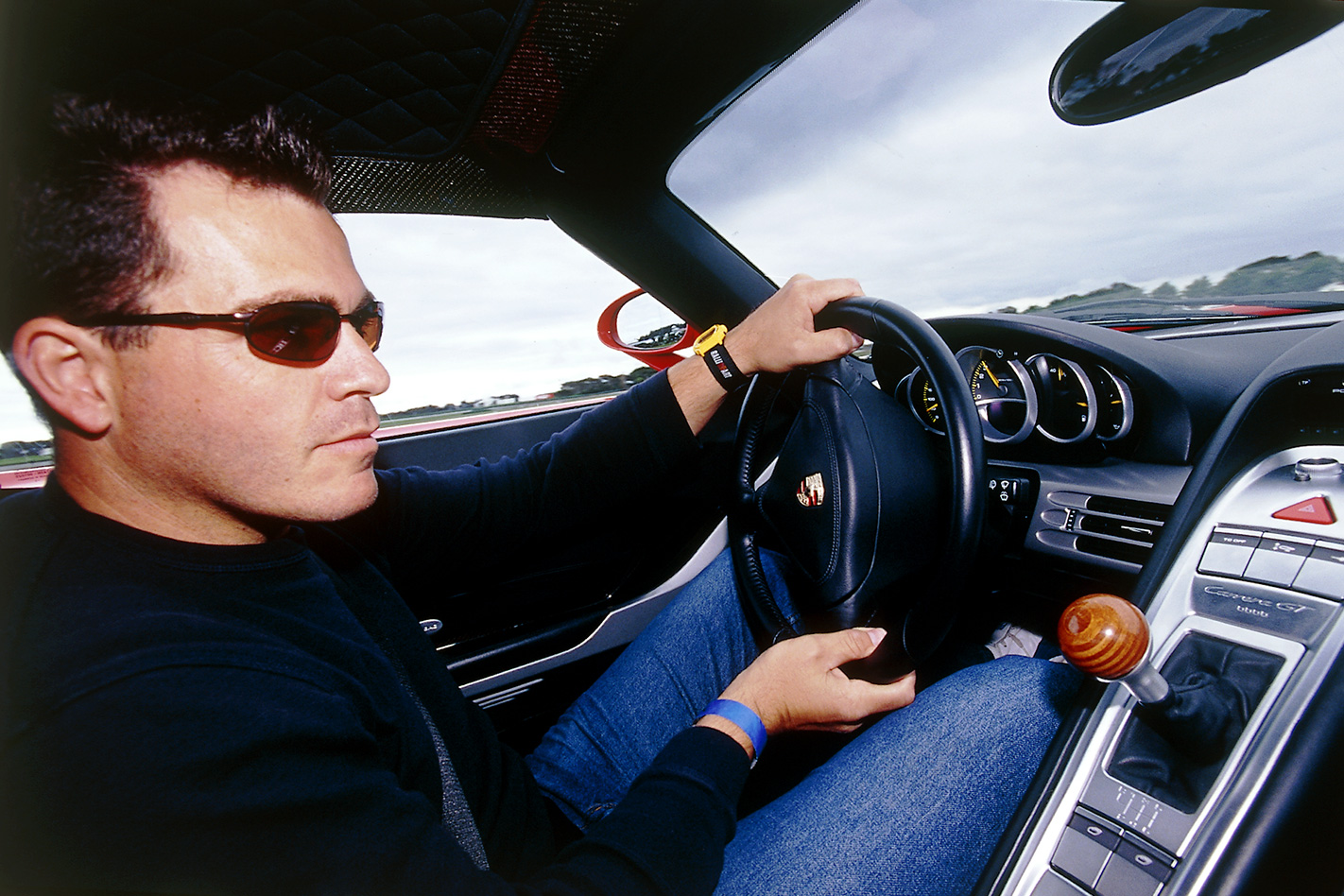
There is one driving trick, though, that came with plenty of warning: the GT’s tiny twin-plate carbon clutch is a right bastard when combined with the V10’s lack of inertia – stalling is commonplace. It’s better to ease off the clutch without touching the accelerator; revs increase automatically and it crawls away with aplomb. So far, so easy.
To get the full rush, once clear of the pit lane, we slow to 5km/h in first gear and absolutely nail the throttle. This, as we discover, is not the best method of acceleration. Instantly, a ferocious explosion erupts from just behind our heads with the speed, sound and cutting intensity of a dentist’s drill. The speedo and tacho flick around the dials as rear tyres spin as if we’ve just driven over a patch of ice, as its traction control light impersonates a strobe.
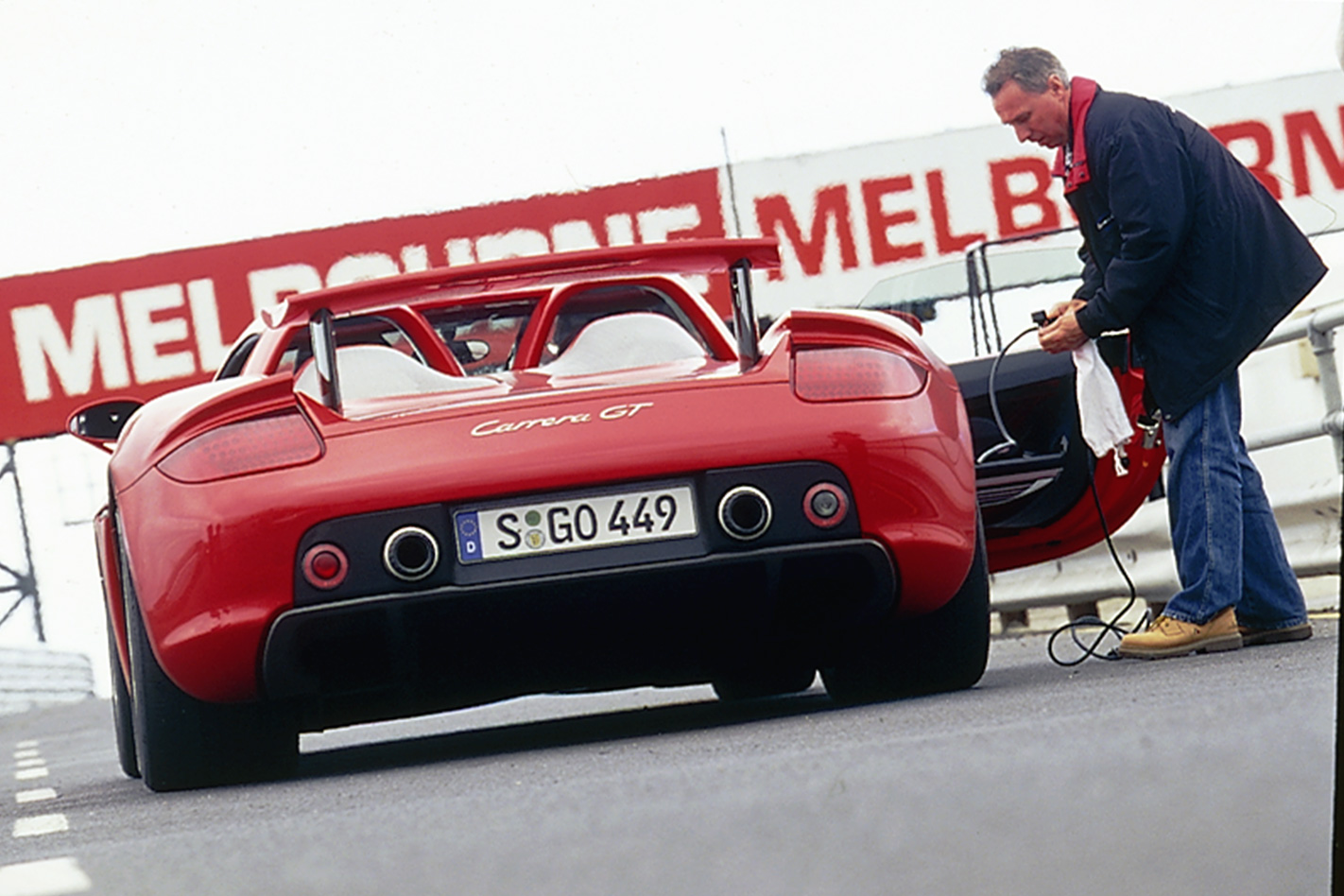
Grab second and the tacho whips around to eight again so fast it feels like it’s wheel-spinning – but this time it’s hooked up. Last issue we proved this car could zero-to-100km/h in 3.8 seconds, but it’s above this speed that it continues to suck back the road. It peaks at 135km/h in second – yes, same as the GT3 RS – but hammers out this wonderful concentration of sound and speed.
From inside, it’s no louder than the RS, but a lot harsher, angrier, and more intense in every way. It revs way harder and faster, with incredible throttle response and an undying rate of acceleration. And we’re doing near-on 200km/h before we’ve hit turn one. Need another number? Its standing kilometre time of 20.4 @ 266km/h blitzes the Lamborghini’s Gallardo’s 23.5 @ 236km/h.
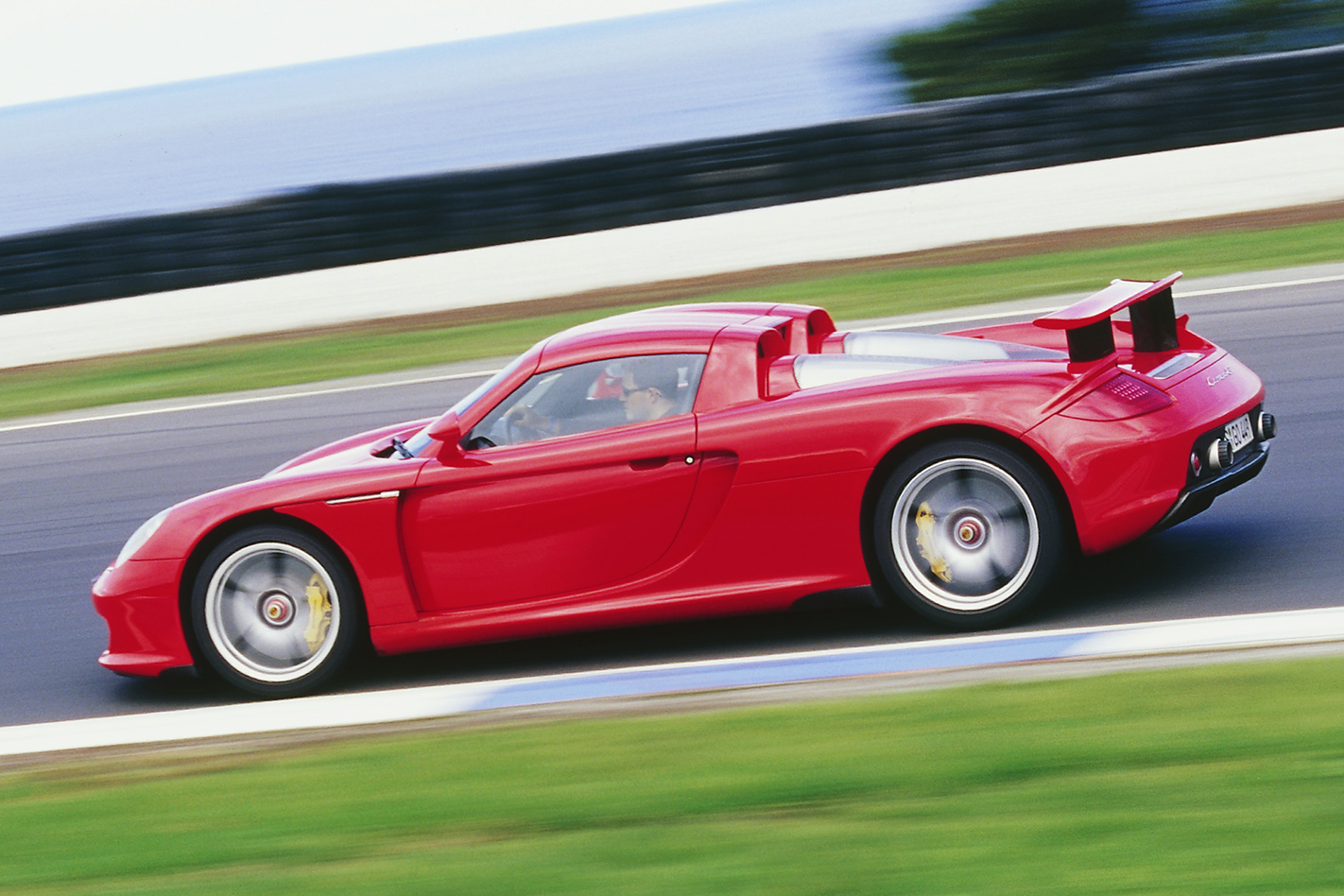
If there’s any movement, it’s from the tyres. Sure, there’s lots of grip from the massive 19 and 20-inch Michelins, but these are still road-treaded tyres that sometimes struggle to put down 450kW – 24 more than a Murciélago.
The brakes work better at speed: grinding like a rock’s been caught in the calipers in the pits, bury the brake pedal and it doesn’t sink the nose as much as drill the entire chassis of the GT into the ground with literally enough braking force to pull passengers out of the seat. It may lack the Gallardo’s all-wheel-drive traction, but the GT’s larger brakes are every bit as capable.
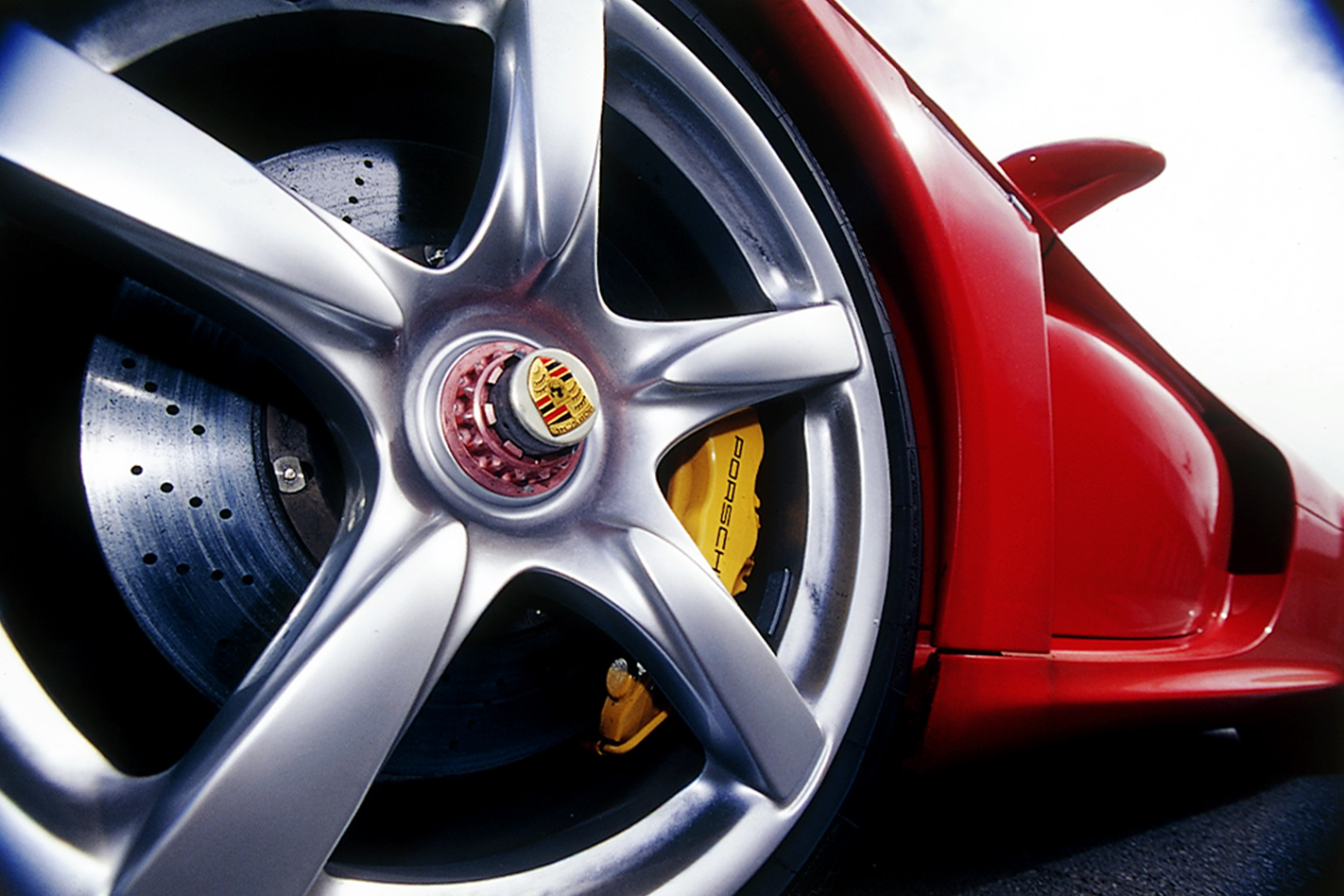
After a few laps, the on-board tyre monitor’s showing rear pressures up around 45psi, needing a slight bleed. The lasting impression is that there’s an incredible chassis, as stiff as a rock, perfect steering, amazing cornering potential, the ability to powerslide on command, an engine stuffed full of power and torque, but tyres that just can’t keep up. But when we’re sitting at the local Porsche dealer with a $1.1million cheque in hand, then we’ll get concerned.
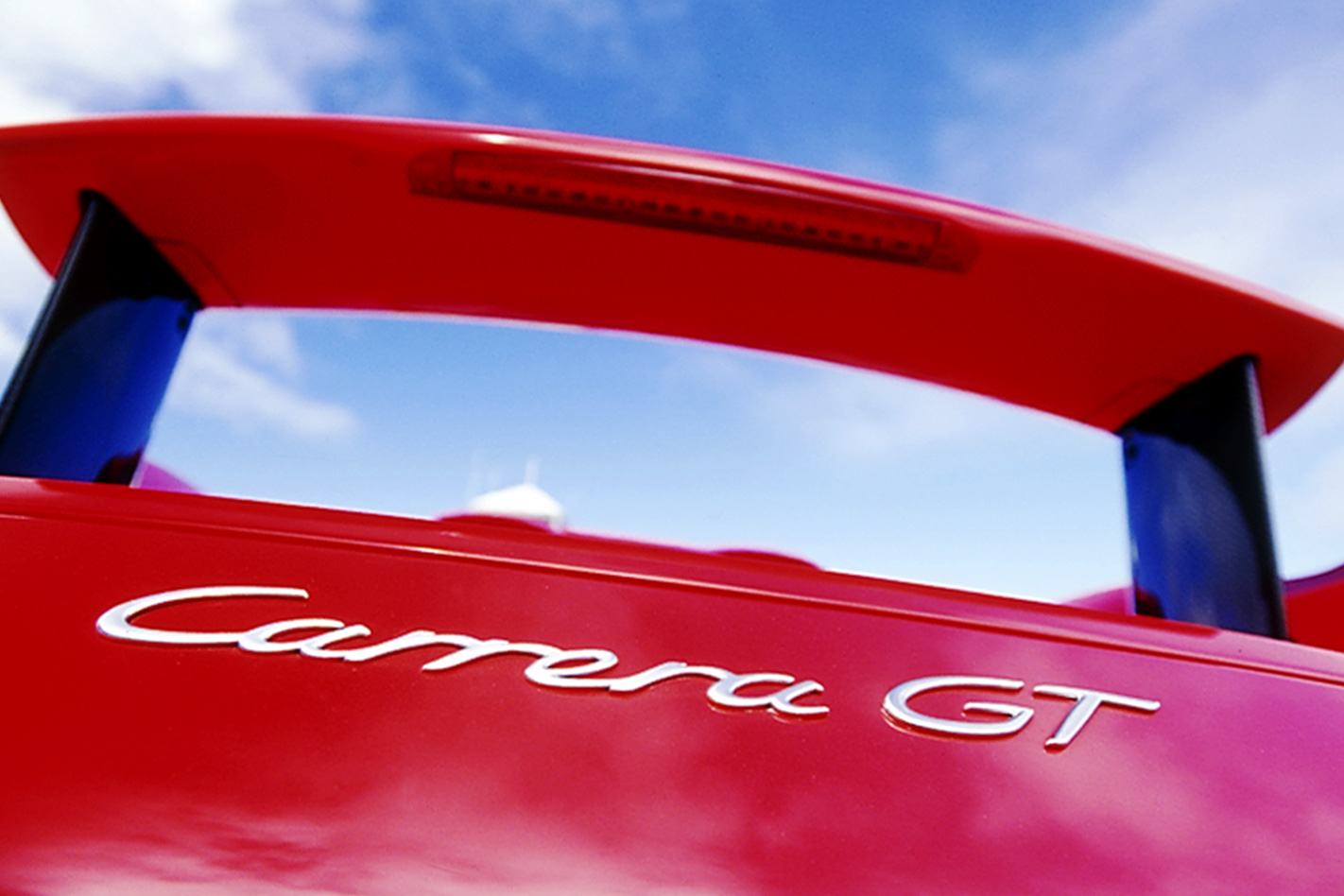
Few things speak as clearly as lap times and a sub-two-minute lap around Phillip Island is sharp for a road car. The GT3 RS lays down a wriggly but impressive 1min:53 seconds. Then the Carrera GT fires up and in one hot lap, slams down a 1min:44secs. So there.
As we proved last issue, it laps faster than a Ferrari Enzo, itself on par with McLaren’s F1. If there’s a faster, better supercar than Porsche’s Carrera GT, we haven’t driven it.
A Carrera for the ‘50s, the Porsche 356
Twin-cam was born in July 1955, when Porsche’s 356 Carrera became the first production car to run dual overhead camshafts. With two valves per piston sucking through a pair of Weber carbies, the 1588cc air-cooled flat-four ponied up 86kW at 6500rpm with a sound of a VW Beetle on Red Bull.
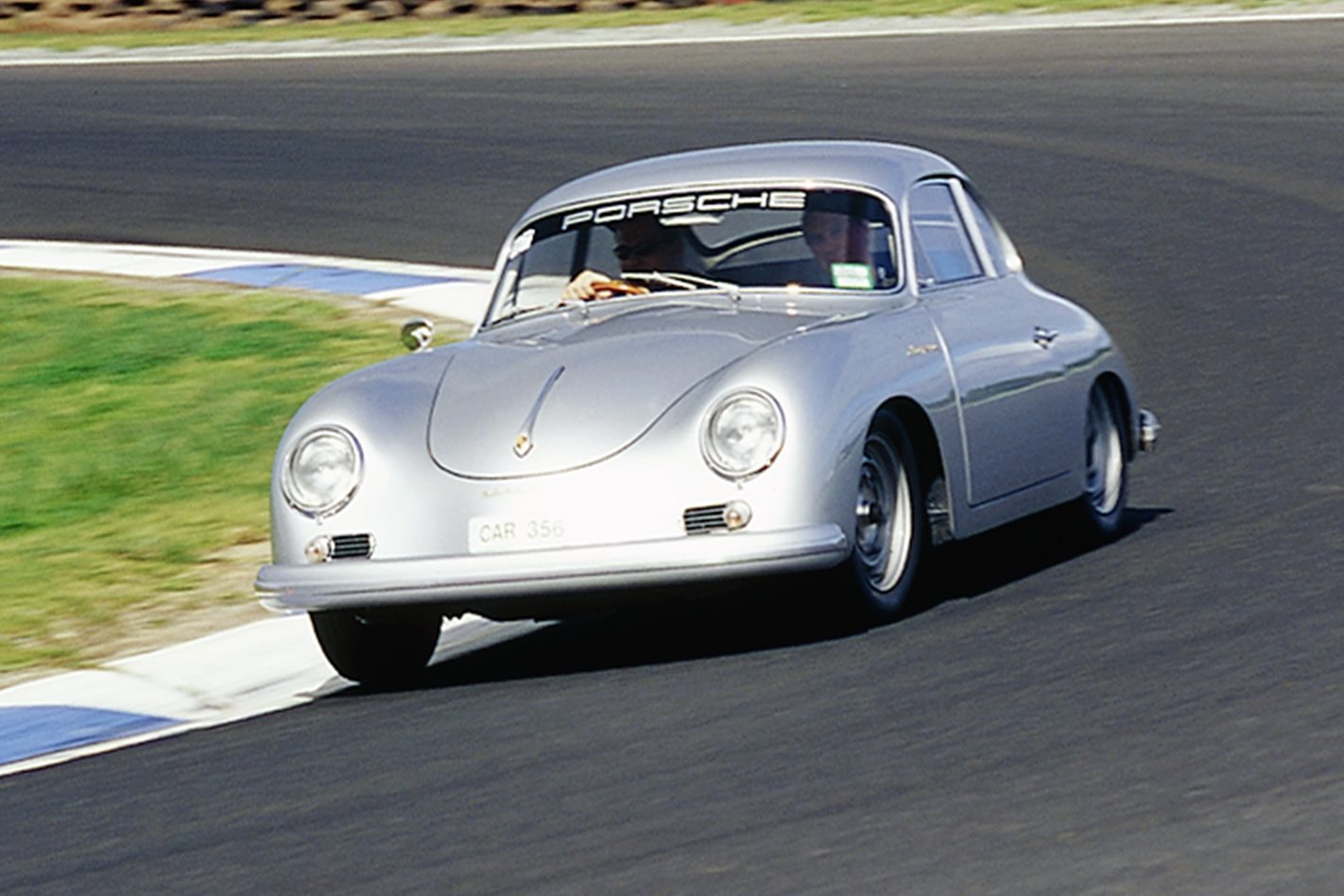
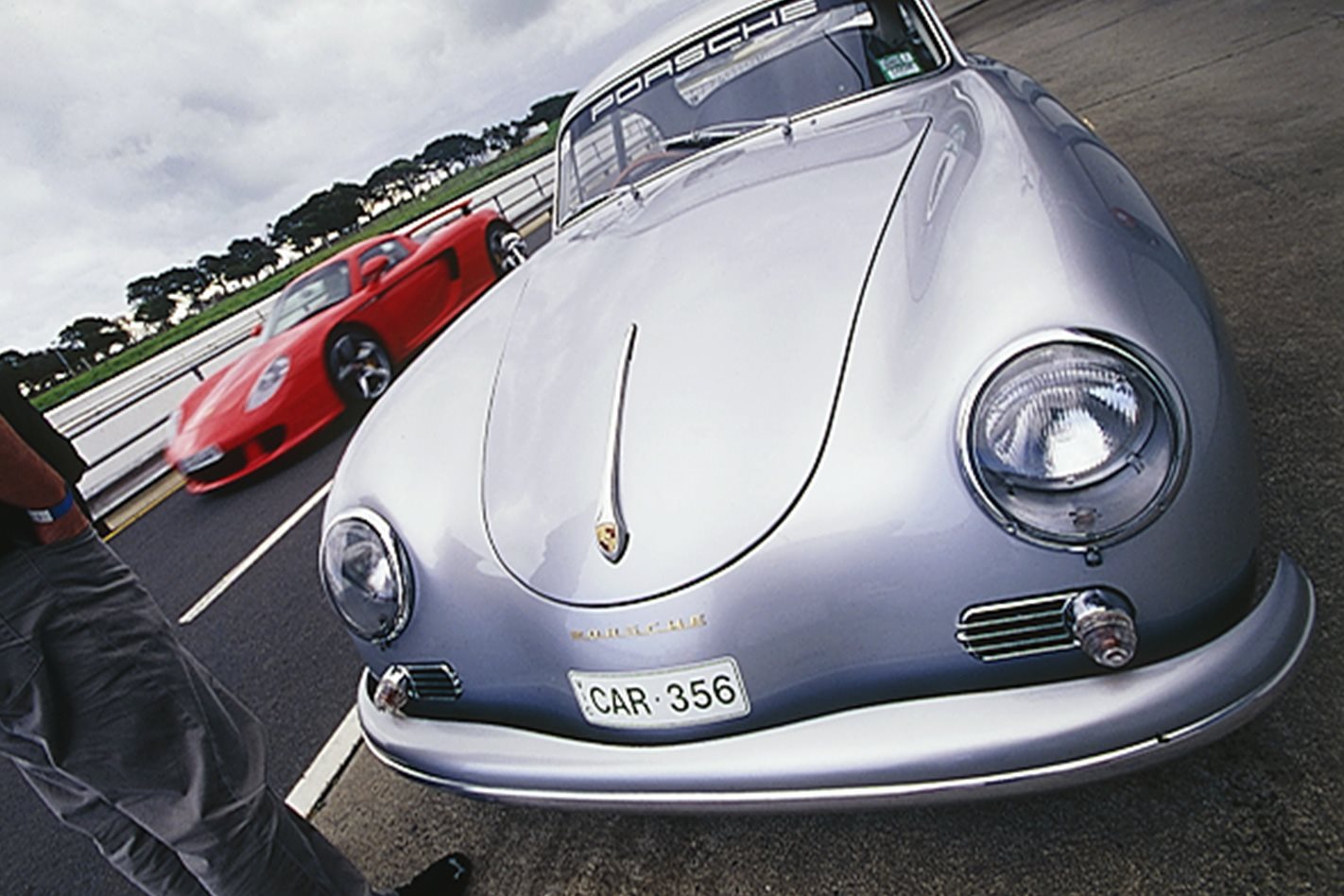
Around Phillip Island, by today’s standards the 356 Carrera doesn’t go, corner or stop. But 50 years ago, this was technology at its fastest and finest.

